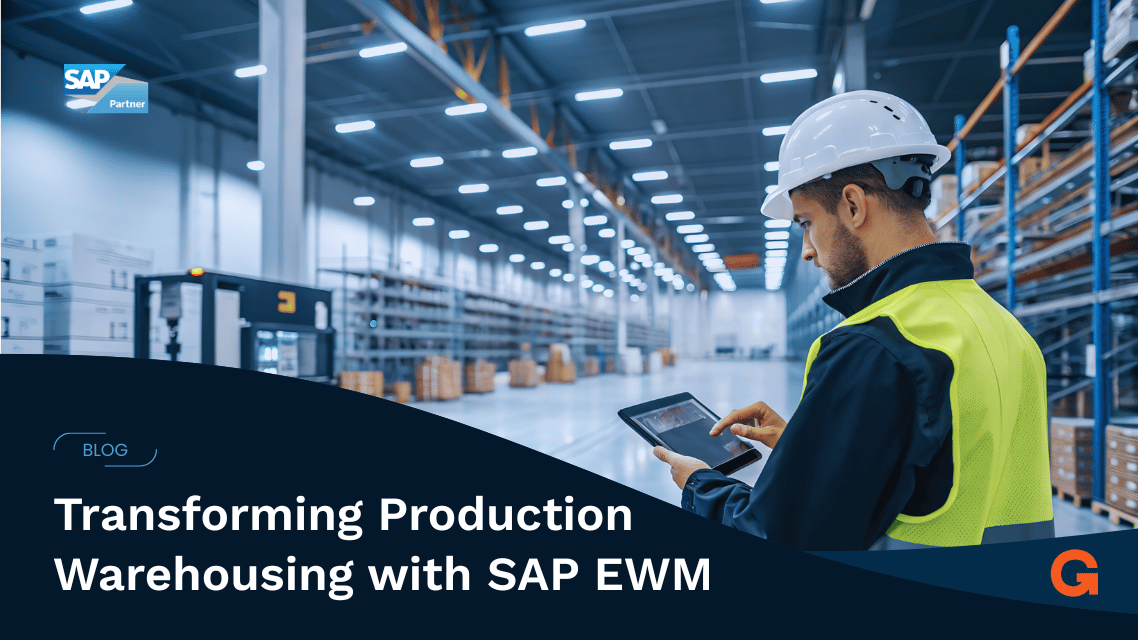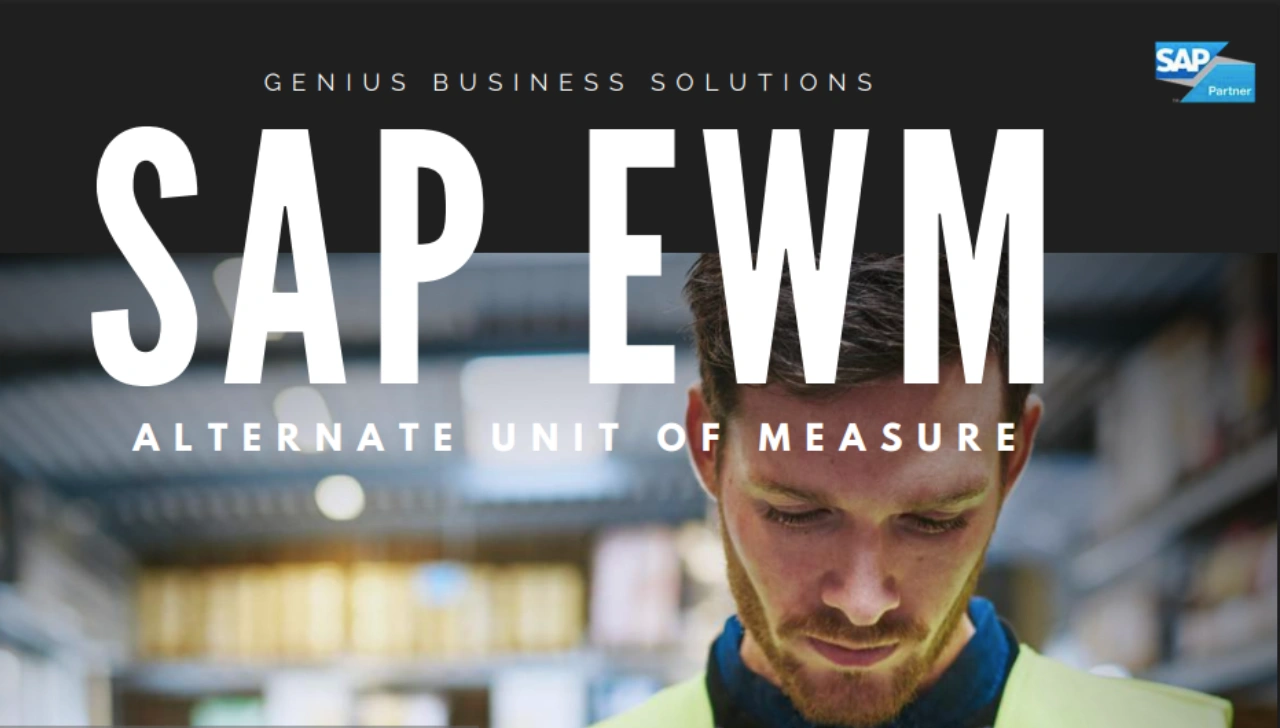Why Legacy Warehouse Methods Hold Back Production
In dynamic manufacturing, outdated warehouse practices—relying on spreadsheets,disconnected systems, and manual updates—can derail production momentum. Wheninbound materials arrive late or are misallocated, assembly lines stall and order cyclesare pushed back. These issues stem from poor task coordination, real-time inventoryblind spots, and manual error, ultimately increasing operational costs and impactingcustomer commitments.
The New Standard: How SAP EWM Is Shaping Next-Generation Warehouses
SAP Extended Warehouse Management (SAP EWM) was designed to support today’shigh-volume, agile operations. Unlike yesterday’s basic systems, EWM deliversend-to-end orchestration across inventory management, labor tasking, and integrationwith production and logistics. Its evolution reflects the rapid pace and complexity ofmodern manufacturing, moving beyond the limitations of older SAP WM modules.
From SAP WM to SAP EWM: What Changed, and Why It Matters
SAP WM, once the staple for warehouse management, is no longer equipped for theprecision demands of the current manufacturing climate. SAP EWM, deeply integratedwithin SAP S/4HANA, was built to meet these new requirements—handling complexautomation, advanced yard management, multi-level storage, and real-time processing.Its ability to connect directly with modules like Quality Management (QM) andTransportation Management (TM) makes it essential as extended support for WMsunsets.
Feature: Scope | SAP WM (Legacy): Basic inventory & tasks | SAP EWM (Modern): Advanced automation & analytics
Feature: Flexibility | SAP WM (Legacy): Limited | SAP EWM (Modern): Highly customizable
Feature: Cross-SAP Integration | SAP WM (Legacy): Requires extra effort | SAP EWM (Modern): Seamless, real-time
Feature: Support Lifecycle | SAP WM (Legacy): Ends 2025/2027 | SAP EWM (Modern): Ongoing/part of S/4HANA
How SAP EWM Modernizes Every Step of Warehouse-Production Integration
● Seamless Link to Manufacturing Plans: EWM integrates with production scheduling, ensuring the right materials arestaged just-in-time by analyzing production requests and creating automatedworkflows from order to delivery.
● Real-Time Component Management: Automated delivery of materials to production lines prevents bottlenecks and idletime, supporting multiple staging models and minimizing downtime.
● Automatic Consumption and Accurate Posting: Finished goods and components are tracked and consumption registeredautomatically, reducing manual errors and maintaining up-to-date stock levels.
● Optimized Handling of Finished Products: EWM generates automated putaway and inspection tasks, accelerating the flowfrom production to distribution with high visibility.
● Granular Visibility and Smart Inventory: The platform tracks inventory at the bin level, dynamically prioritizing tasks andreplenishments based on actual demand and system-driven logic.
● Labor, Yard, and Dock Optimization: KPIs for critical warehouse-to-production tasks help managers allocateworkforce efficiently and coordinate inbound goods for seamless just-in-timedelivery.
● Actionable Analytics for Production Logistics: Extensive reports empower managers to fine-tune scheduling, identify processbottlenecks, and continuously enhance performance.
Tangible Value: What Manufacturers Gain with SAP EWM
SAP EWM isn’t just about automation—it translates into concrete business outcomes.Key results include:
● Increased warehouse productivity (often 30%+ gains)
● Real-time supply chain transparency and reduced losses from shortages
● Faster, near error-free fulfillment through automated quality and inventory checks
● Improved regulatory and compliance adherence via traceable, paperless workflows.
Roadblocks to EWM Success (and How to Overcome Them)
EWM delivers substantial value, but successful implementation requires carefulplanning and experienced support:
● Complex Technical Integrations: Bringing together EWM, ERP/mes, and automation systems takes expertise androbust testing strategies.
● Custom Process Design and Training: User resistance and process reengineering demand change management, strongonboarding, and ongoing upskilling.
● Unique Operations, Unique Configurations: Generic templates rarely fit—EWM needs tailored setup to fully harness itspotential.
● Budget and Ownership: EWM requires upfront investment—long-term ROI hinges on the right rollout,partner, and optimization approach.
Laying the Foundation: Your Path to an Efficient Production Warehouse
Starting strong means:
1. Assessing and upgrading to the appropriate SAP S/4HANA environment(on-premise, cloud, or hybrid)
2. Defining warehouse requirements to guide whether basic or advanced EWMfeatures are a match
3. Working with SAP experts to ensure data, process, and system migration alignswith business priorities
Strategic Factors for EWM Warehouse Excellence
Success hinges on:
● Setting clear business transformation objectives
● Detailed planning, testing, and phased rollout
● Early and continuous user engagement
● Choosing the right EWM specialists and implementation partner
● Adapting system enhancements as business and technology evolve
As robotics, AI, and IoT accelerate warehouse transformation, SAP EWM stands readyfor greater integration—offering manufacturers the agility to lead in tomorrow’s supply chains.
Why Choose GBSI for SAP EWM Implementation?
GBSI has an unmatched track record in delivering end-to-end SAP EWM solutions—fromnew rollouts and WM migrations to custom optimizations and integrations with allmajor SAP modules (TM, PP, MM, and more). The GBSI approach ensures:
● Tailored solutions for your operation’s unique workflow
● Cost-optimized, ROI-focused rollouts
● Full training and change management
● Ongoing support for continuous improvement
Discover how GBSI can drive your transformation—get in touch with our experts andfuture-proof your production warehouse success.






















